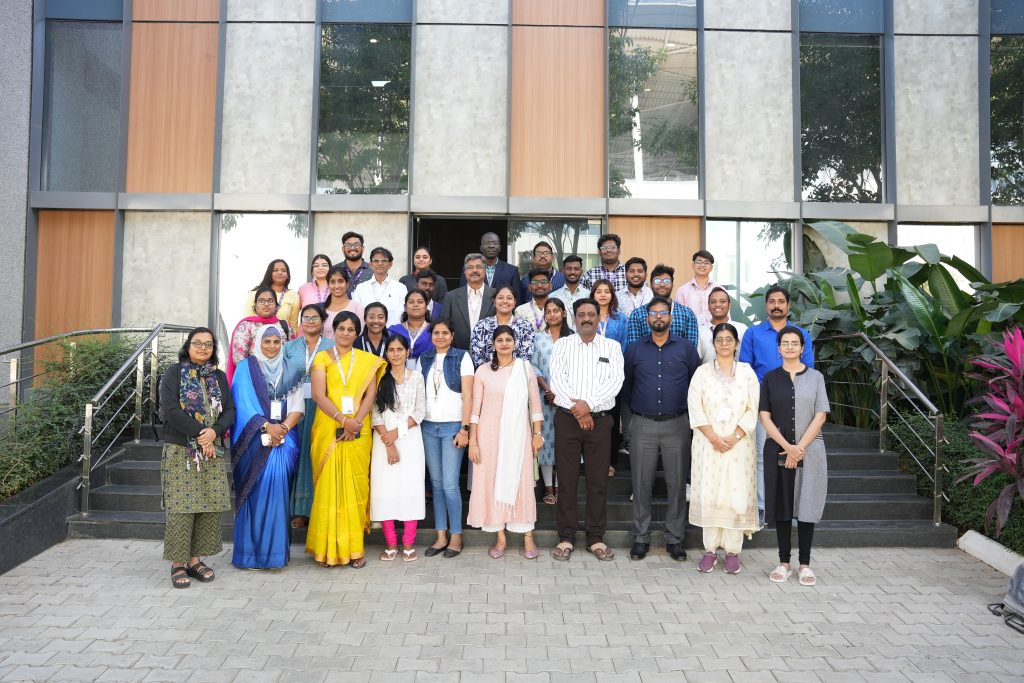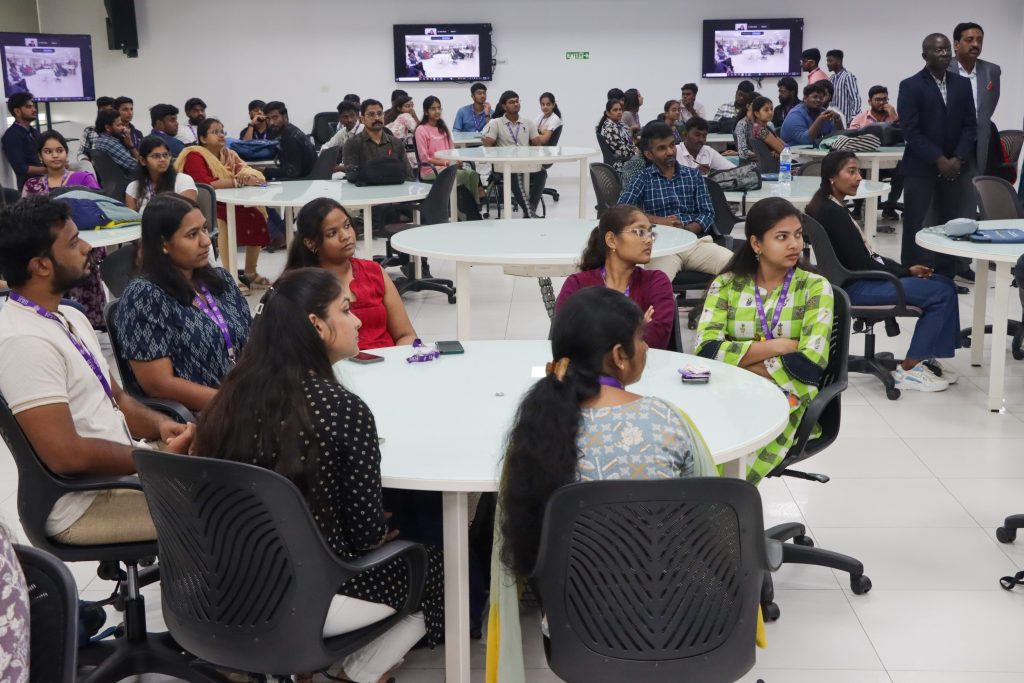- Enabling Research Excellence: Paari School of Business organises Five-Day FDP February 3, 2025
 Research is essential for academics in today’s dynamic environment and SRMAP sincerely believes in the idea that research is the foundation to innovation and progress. The Department of Management at Paari School of Business organised a 5-day International Faculty Development Programme (FDP) in hybrid mode, focusing on the “Art of Writing High-Quality Research Articles in Management.” Resource persons, Prof. Piyush Sharma, Prof. Tak Yan Leung, Dr Kishore Gopalakrishna Pillai, and Dr Vimal Babu, provided participants with valuable insights into advanced research methodologies and effective academic writing strategies.
Research is essential for academics in today’s dynamic environment and SRMAP sincerely believes in the idea that research is the foundation to innovation and progress. The Department of Management at Paari School of Business organised a 5-day International Faculty Development Programme (FDP) in hybrid mode, focusing on the “Art of Writing High-Quality Research Articles in Management.” Resource persons, Prof. Piyush Sharma, Prof. Tak Yan Leung, Dr Kishore Gopalakrishna Pillai, and Dr Vimal Babu, provided participants with valuable insights into advanced research methodologies and effective academic writing strategies.The FDP aimed to deliver a comprehensive understanding of the essential components of academic research and publication, equipping attendees with the skills required to craft well-structured, high-impact research articles. The topics discussed during the five-day programme were particularly relevant and contemporary. Moreover, the resource persons encouraged the participants to enhance their research output, improve the likelihood of the participant’s publication in reputable journals, and contribute meaningfully to the academic community. The FDP sought to bridge the gap between research conceptualisation and publication, enabling faculty members to become more proficient and impactful researchers.
Participants greatly benefitted from the combined expertise and experience of these distinguished scholars, fostering a deeper understanding of high-quality research practices.
Continue reading → - Women in Leadership: Two-Day ICSSR-sponsored Conference Come to a Successful End January 27, 2025

The Paari School of Business hosted its Two-Day ICSSR-sponsored National Conference on the theme “Women in Higher Educational Institutions (HEIs) and Career Progression” as part of the Vision Viksit Bharat@2047 initiative on January 23 – 24, 2025. This event brought together academics, delegates, and leaders to discuss research findings and actionable solutions for advancing gender equity in academia and leadership roles.
Prof. Bharadhwaj Sivakumaran, Dean – Paari School of Business, delivered the welcome address and officially inaugurated the conference. In his address, he highlighted the significance of the conference in promoting the Viksit Bharat Programme and fostering inclusivity in education, drawing attention to the persistent gender disparity in leadership roles within Indian academia, citing that very few Indian Institutes of Management (IIMs) have female directors and only a small percentage of Indian universities are led by women Vice-Chancellors. Prof. Bharadhwaj commended the efforts of researchers like Dr Kamesh, whose ICSSR-funded study on breaking the glass ceiling effect secured a ₹20 lakh grant, which focuses on understanding and addressing barriers that limit women’s progress to leadership positions in higher education.
The first keynote address was delivered by Ms Rekha V, Vice President of HR at vCom Solutions, California, on the glass ceiling effect, and its impact on women. She began by acknowledging the efforts of the organising committee in addressing this pressing issue and shared her perspective on the systemic barriers that hinder women’s advancement in leadership roles across sectors.
Ms Rekha commented, “There is a high underrepresentation of women in senior leadership roles, for example, in the tech sector. This disparity results from various biases that obstruct their career progression.” She emphasised that the challenges extend beyond mere representation, involving deeply ingrained issues such as unconscious bias, gender stereotypes, limited access to promotions, and inequitable pay structures, despite evidence showing that women often outperform their male counterparts.
She insisted organisations make conscious efforts to address these challenges by creating awareness about them, setting up mentorship programs, advocating for pay equity, and promoting transparent promotion practices. Her statement, “Be the change, Bring the change,” served as a reminder to actively contribute to creating diverse environments that champion gender equity and work towards shattering the glass ceiling and building societies where every woman has opportunities to rise to the highest levels. The keynote address concluded with an engaging Q&A session, during which the discussion focused on the thought-provoking questions asked by the audience.

The second keynote address was delivered by Dr Syed Sadiq, a UN Women Representative from Kyrgyzstan. He commended the Paari School of Business and ICSSR for their dedication to advancing women’s rights and higher-education career opportunities. Reflecting on global progress since the first International Women’s Day in 1911, he highlighted achievements like equal voting rights, leadership opportunities, and establishing landmark treaties like the UN CEDAW (Convention on the Elimination of All Forms of Discrimination Against Women).
Despite these advancements, Dr Syed spoke about the persistent challenges women face in achieving equal pay, breaking barriers to leadership, and addressing workplace discrimination. He emphasised the need for gender-inclusive policies in higher education, targeted funding, mentorship programs, and stronger laws to combat harassment and discrimination. His “Change the Trend” and “Women Deserve More” statements were inspiring. He also discussed how systemic efforts that align with the Sustainable Development Goals (SDGs) can bring meaningful change to ensure no one is left behind.
The two-day conference also had various sessions on the barriers and biases that lead to the underrepresentation of women in leadership roles. The event concluded with a felicitation ceremony where both speakers were awarded a memento in appreciation of their remarkable sessions as keynote speakers.
Continue reading →





